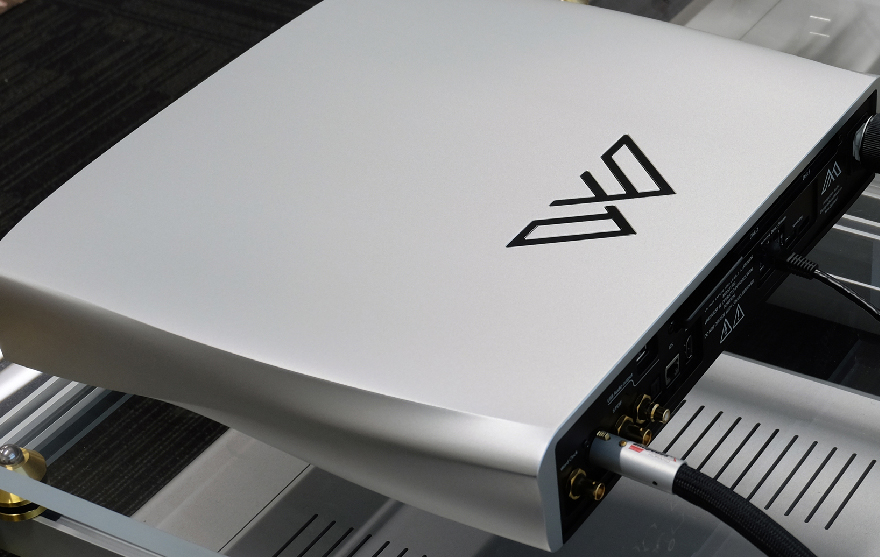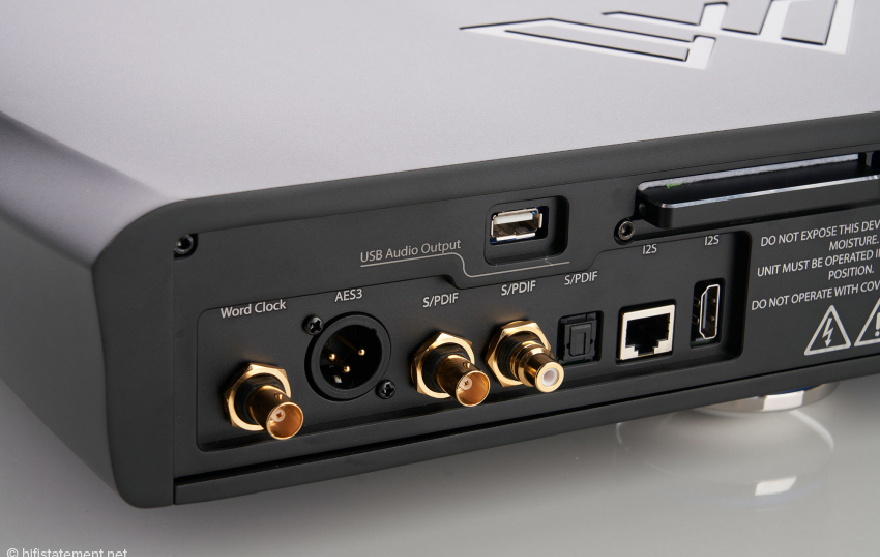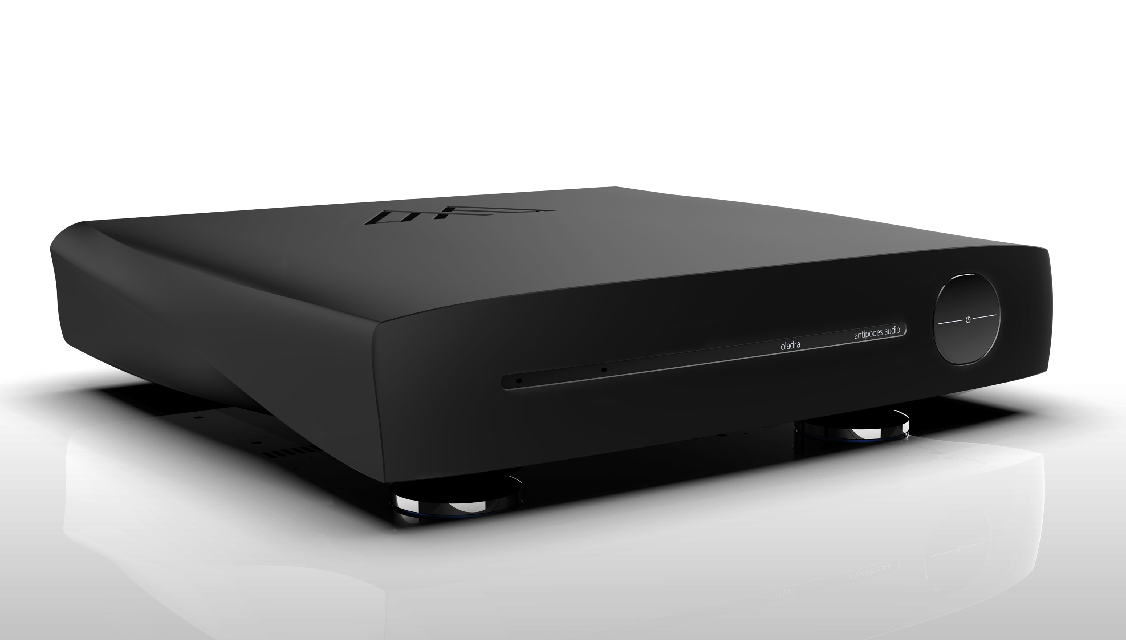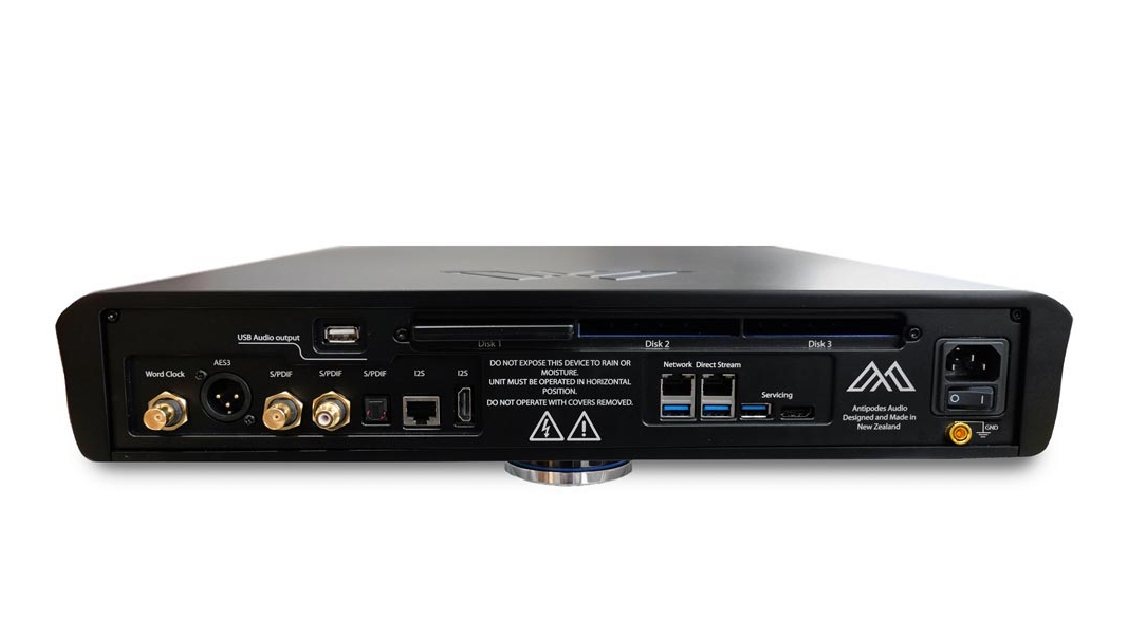
The Oladra employs our new high-power V7H computing engine to run Server apps (such as, Squeeze Server, Roon Server, HQPlayer Server, Plex Server, etc). This is an entirely different board than the one used in the K50, dramatically improving Server app performance. Users can easily install their own SSD storage – 3 disks, up to 24TB. The Server computing engine has 64GB of RAM installed, offers an external Direct Stream link to play to the Ethernet input on a DAC, and has an ultra-high-speed proprietary link to stream to the Player engine.

The Oladra employs our new mid-power V7X computing engine to run Player apps (such as Squeeze (Squeezelite), Roon (Roon Ready), HQPlayer NAA, MPD, etc). This board is based on the Player board in the K50 but all chipsets are upgraded, together with a range of other circuit improvements. The Player computing engine has 8GB of RAM installed, offers a USB Audio output to play to the USB input on a DAC, and provides galvanically isolated transmission to the Reclocker engine.

The Oladra employs a powerful, FPGA managed, oven-controlled, high-end clock, fed by a high-quality local power supply employing Graphene super-capacitor smoothing, and discrete line drivers for S/PDIF (RCA & BNC), I2S (RJ45 & HDMI), AES3 (3-pin XLR) outputs. This board includes higher-specified circuitry compared to the K50. Completing the first synchronous clocking step outside the DAC allows us to use far more processing power than should be used inside a DAC. Your DAC will perform another reclocking step but the result is greatly enhanced by the Oladra feeding it with a precision-timed signal. For this reason, and because noisy USB and Ethernet stages are not required to be used inside your DAC, the Oladra’s synchronous outputs (S/PDIF, AES3, I2S) will provide you with the best sound quality.
Experience your favourite music as if for the first time. The Oladra presents every detail with correct phase, proportion and timing, delivering music that flows with natural energy and without strain. Rendering how real musicians sound in real spaces unveils the artistry of the musicians and the passion in every recording.
The Server engine manages your files and streaming services, streams direct to the player stage, or direct to your DAC, and over your network to streamers. The Player engine plays to the re-clocker, or to your DAC via a USB Audio 2.0 compliant output. The Re-clocker engine plays to your DAC over S/PDIF, AES3 and I2S.
Vibration treatment is important in any high-end audio system, and any serious system is placed in a well-engineered rack. The same should apply to the equipment cases. They should be just as well engineered to deal with vibration, and we take that very seriously in every Antipodes model.
We also put a lot of design effort into the footers used on the Oladra, and this has trickled down to the benefit of all of the K series models in 2023. The footers include a special polymer that is specifically designed for vibration control, and the very detailed specifications provided by the manufacturer of this material allow us to precisely calculate the thickness to be used in each instance so that the pressure applied to the polymer is always precisely what is required for optimum vibration control performance. In the Oladra and the Performance Series the Polymer is used in a constrained layer damping design that makes it possible to tune each separate footer even more precisely to its optimum pressure, and allow a very small contact area with the equipment rack.
The following Server applications are pre-installed.
- Squeeze Server
- customised version of Logitech Media Server - Roon Server
- industry-leading user interface and feature-set - HQPlayer Server Embedded
- industry-leading digital signal processing - MinimServer
- industry-leading DLNA/UPnP server - MiniDLNA
- light-weight DLNA/UPnP server - SONOS Server
- makes your music available to a SONOS network - PLEX Server
- widely-used and industry-leading a/v media server
Each Server application can play to compatible Streamers on your network. Both Roon Server and PLEX Server can also make your music available to your mobile devices on the move.
You can enable or disable as many as you need with a single click each, and they can play music concurrently. For simplicity, each application is pre-set to play from a common music library. Simply use the Antipodes File Manager application to drag and drop files to the Antipodes music library, and to include any directory on your network in the library. All music in the library becomes automatically available to all Server applications.
The table below summarises the Player(s) that can work with each Server.
| Server Application | Player Applications |
|---|---|
| Squeeze Server | Squeeze Player |
| Roon Server | Roon Player Squeeze Player HQPlayer Server/NAA |
| HQPlayer Server | HQPlayer NAA |
| MinimServer | MPD |
| MiniDLNA | MPD |
| SONOS Server | No Players |
| PLEX Server | No Players |
Note that:
- Some solutions work differently, depending on whether the solution is on a single computer or spans two computers (the Server app and the Player app being on different devices), but the Antipodes Management Software (AMS) handles those issues automatically for you.
- Roon Server can be used with a range of Players, as shown in the table.
- MPD is also capable of playing music from a local library without the need to receive a stream from a server application.
- Antipodes music server/streamers do not have a SONOS or PLEX player application. SONOS and PLEX server apps are included for streaming to third-party SONOS or PLEX player devices.
OPEN AMS
You set the Playback Solution using AMS, which you can open from the Antipodes website, or using the My Antipodes application on your mobile device.
At the solution dashboard, click to display the Preset list (shown above) and click on the Preset solution you wish to use. In the same way, you can switch between Presets with a single click. In the image above, the K50 is currently set to use the Squeeze (Auto) preset and clicking on Roon (Auto), as highlighted, will change the Player application to Roon and the Server application to Roon, and you can then start using the Roon application on your desktop, laptop, tablet or smartphone to play music.
Specification
Server/ Player/ Reclocker
USB Audio 2.0 Output
– PCM to 32 bit/768kHz
– DoP to DSD256
– Native DSD to DSD512
S/PDIF Output on RCA & BNC
– PCM to 24bit/192kHz
– DoP to DSD64
AES3 Output on XLR
– PCM to 24bit/192kHz
– DoP to DSD64
I2S Output on HDMI & RJ45
– PCM to 32bit/384kHz
– DoP to DSD256
– Native DSD to DSD512
Direct Stream Ethernet Output
User installable storage
3Bay SSD Slide-In (Up to 24TB)
Hardware Modules
Computing Engine (Server) - V7H
Computing Engine (Player) - V7X
Clock Module - R2i
Size
445 x 400 x 80mm
Weight
21kg




















Welcome to leave your comments for other users' reference